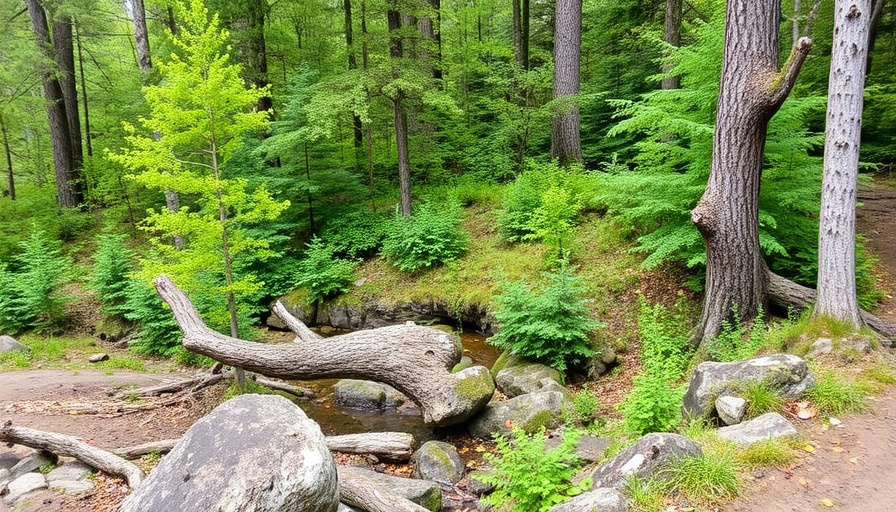
A Forgotten Gem: The Story of Mackinac Island
On a mild summer day, Mackinac Island is filled with laughter and the sound of horse-drawn carriages, yet it embodies a rich history that dates back to its origins as the second national park in the United States. Established in 1875, Mackinac National Park existed only for 20 years before the federal government deemed it too costly to maintain and transferred it to the State of Michigan in 1895. This shift marked a pivotal moment for the island—a place celebrated today for its stunning natural beauty and vibrant culture.
Historical Context: The Making of a National Park
Mackinac Island was set aside by President Ulysses S. Grant not only for its natural wonders but also for its historical significance. The island's history stretches back to the Indigenous Anishinaabe people, who lived in harmony with the land long before European settlers arrived. As a national park, it was a sanctuary for both its scenic wonders, such as the grand Arch Rock, and historical sites, including remnants from the War of 1812.
This dual significance of nature and history is crucial for understanding Mackinac Island's status today. Despite its official national park designation being short-lived, the island maintained its charm and importance, showcasing its rich history through preserved structures like Fort Mackinac, the oldest building in Michigan, still echoing tales of the past.
Mackinac Island Today: A Blend of History and Leisure
Today, about 84% of Mackinac Island is protected as a state park, preserved not only for recreational activities but also as a testament to its rich heritage. Visitors today can experience the unique blend of history and leisure as they explore the sites, sample the famous local fudge, or enjoy a evening stroll along the car-free roads, which have been in place since 1898.
This unique mode of transport—horse-drawn carriages—helps preserve the island’s historic ambiance. Events celebrating its history, such as the 150th anniversary of its national park status, entice visitors with fascinating guided tours, workshops, and cultural exhibitions. Such occasions emphasize the island’s commitment to honoring its past while adapting to modern tourism.
Unique Attractions and Celebrated Events
This summer, Mackinac Island is pulling out all the stops for its anniversary celebrations. Thrilling events include a new documentary, “A Pride of Purpose: The Story of Mackinac National Park,” which offers deep insights into its evolution from a national park to a state treasure. The Richard & Jane Manoogian Mackinac Art Museum is also hosting an exhibition celebrating its cultural relevance.
As residents and visitors alike explore Mackinac Island, they find that its legacy lives on through various attractions and seasonal festivities. Whether it's sampling local cuisine during a themed Fourth of July bash or enjoying a leisurely bike tour, the island invites people of all ages to partake in its rich heritage.
Lessons from Mackinac Island: Preservation and Future Opportunities
The story of Mackinac Island serves as a reminder of the importance of preserving historical sites while adapting to modern needs. It highlights the delicate balance between nature, heritage, and tourism. For local communities, understanding how to maintain and promote sites like Mackinac is essential for economic growth while ensuring cultural preservation.
As San Diego residents reflect on their city’s own historical sites and recreational areas, they can learn from Mackinac’s success in preserving its charm, promoting tourism, and celebrating its heritage. There may also be opportunities for local communities to elevate their historical narratives, connect with residents, and engage visitors in new ways.
Conclusion: A Call to Explore and Preserve
As Mackinac Island celebrates its unique history, it also reminds us that every location has a story worth telling. Just as Mackinac evolved, so too can our local spaces. Exploring sites around San Diego can foster appreciation for our own rich heritage while ensuring that we pass these stories on to future generations. So, pack a picnic, explore a local trail, or dive into a historical site. Engage with your community and celebrate the history that surrounds you!
 Add Row
Add Row  Add
Add 




Write A Comment